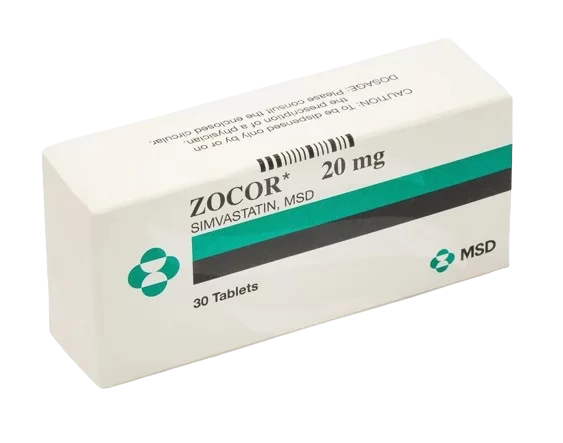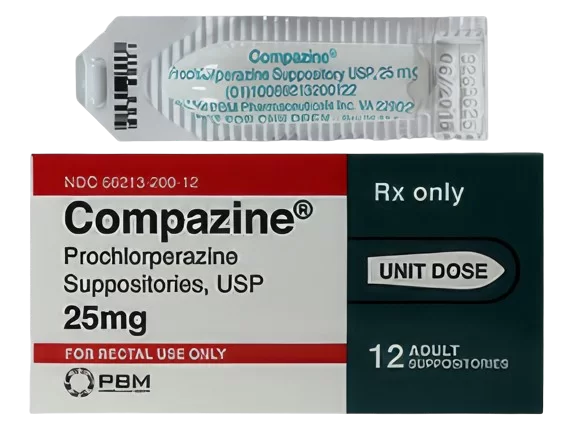
Furosemide
Furosemide - 100mg
| Product | Per Pill | Savings | Per Pack | Order |
|---|---|---|---|---|
| 60 pills | $0.76 | $45.74 | Buy Now | |
| 90 pills | $0.67 | $7.96 | $68.61 $60.65 | Buy Now |
| 120 pills | $0.63 | $15.92 | $91.49 $75.57 | Buy Now |
| 180 pills | $0.59 | $31.84 | $137.23 $105.39 | Buy Now |
| 270 pills | $0.56 | $55.71 | $205.84 $150.13 | Buy Now |
| 360 pills | $0.54 | $79.59 | $274.45 $194.86 | Buy Now |
Furosemide - 40mg
Overview of Furosemide
General Introduction to Furosemide
- Furosemide, also known by its brand name Lasix, is a potent diuretic (water pill) used primarily to treat edema associated with congestive heart failure, liver disease, kidney disease, and other medical conditions. It is also prescribed for managing hypertension. Furosemide works by inhibiting the reabsorption of sodium and chloride in the kidneys, leading to increased urine production and the removal of excess fluid from the body. Furosemide is available in various forms, including oral tablets, oral solution, and injectable formulations.
Key Benefits and Unique Properties of Furosemide
- Effective Fluid Removal: Quickly reduces fluid accumulation in tissues (edema), providing relief from swelling and associated symptoms.
- Blood Pressure Control: Helps lower blood pressure in hypertensive patients by reducing fluid volume.
- Rapid Onset of Action: Begins to work within an hour of oral administration and within minutes when given intravenously.
- Multiple Administration Routes: Available in oral and injectable forms, offering flexibility in administration based on patient needs.
- Management of Acute and Chronic Conditions: Useful for both short-term relief of acute symptoms and long-term management of chronic conditions like heart failure and chronic kidney disease.
Effectiveness of Furosemide
- Clinical studies and widespread clinical use have demonstrated the effectiveness of Furosemide in reducing edema and managing hypertension. It is a cornerstone treatment for fluid overload conditions and has proven benefits in improving symptoms and quality of life for patients with heart failure and other conditions causing edema.
Safety and Tolerability of Furosemide
- Furosemide is generally well-tolerated, but it can cause certain side effects. Common side effects include dehydration, electrolyte imbalances (such as low potassium or sodium), dizziness, and increased urination. Serious side effects can include severe dehydration, kidney dysfunction, and hearing loss with high doses. Regular monitoring and adherence to prescribed dosages can minimize these risks.
Indications for Use of Furosemide
Diseases and Conditions Treated by Furosemide
- Furosemide is indicated for the treatment of edema associated with congestive heart failure, liver cirrhosis, kidney disease, and nephrotic syndrome. It is also used for the management of hypertension.
Primary Symptoms and Indications for Furosemide
- Edema: Effectively reduces swelling in the legs, ankles, and other parts of the body caused by fluid retention.
- Hypertension: Lowers blood pressure by decreasing the overall fluid volume in the bloodstream.
- Heart Failure: Helps manage fluid overload in heart failure patients, reducing symptoms such as shortness of breath and fatigue.
Dosage and Administration of Furosemide
Recommended Dosage of Furosemide
- The dosage of Furosemide varies based on the condition being treated. For edema, the typical starting dose is 20-80 mg taken once or twice daily. For hypertension, the usual dose ranges from 40-80 mg daily, divided into two doses if necessary.
Timing and Frequency of Furosemide Administration
- Edema: Typically taken once or twice daily, with the dose adjusted based on patient response and severity of symptoms.
- Hypertension: Usually taken once or twice daily, with doses divided if needed to maintain blood pressure control throughout the day.
Additional Recommendations for Furosemide Use
- Proper Use: Follow the dosing instructions provided by a healthcare professional. Furosemide can be taken with or without food.
- Missed Dose: If a dose is missed, take it as soon as remembered unless it is almost time for the next dose. Do not double the dose to make up for the missed one.
- Monitoring: Regular follow-up appointments with a healthcare provider can help monitor the effectiveness of the medication and any potential side effects, including electrolyte imbalances.
Mechanism of Action of Furosemide
Description of Furosemide Mechanism
- Furosemide works by inhibiting the sodium-potassium-chloride co-transporter in the thick ascending limb of the loop of Henle in the kidneys. This action prevents the reabsorption of sodium and chloride, leading to increased excretion of these electrolytes along with water in the urine.
Biochemical Processes Involving Furosemide
- Electrolyte Transport Inhibition: By blocking the co-transporter, Furosemide disrupts the reabsorption of sodium and chloride, leading to increased urinary excretion.
- Increased Urine Production: The increased excretion of sodium and chloride draws water into the urine, increasing urine volume and reducing fluid retention in tissues.
Physiological Effects of Furosemide
- Reduction of Edema: Decreases fluid accumulation in tissues, reducing swelling and associated symptoms.
- Lowered Blood Pressure: Reduces overall fluid volume, helping to lower blood pressure in hypertensive patients.
Composition of Furosemide
- Ingredients in Furosemide
- Furosemide contains the active ingredient furosemide, which is responsible for its diuretic effects.
- Inactive ingredients in Furosemide formulations may include lactose, magnesium stearate, microcrystalline cellulose, and other excipients that help stabilize the formulation and ensure proper delivery of the medication.
Side Effects of Furosemide
General Introduction
- Understanding potential side effects helps ensure the safe use of Furosemide. Patients should be aware of common and serious side effects to monitor their health effectively while on the medication.
Possible Side Effects of Furosemide
- Common Side Effects: Increased urination, dehydration, electrolyte imbalances (such as low potassium or sodium), dizziness, and headache.
- Less Common Side Effects: Muscle cramps, weakness, nausea, and rash.
- Serious Side Effects: Rare but serious side effects include severe dehydration, kidney dysfunction, hearing loss (especially with high doses), and severe allergic reactions.
Frequency and Severity of Furosemide Side Effects
- Common side effects are generally mild and manageable with dose adjustments and supportive care. Serious side effects are rare but can be life-threatening, necessitating immediate medical intervention. Regular follow-ups and patient education on correct usage can minimize risks.
Prevention of Side Effects of Furosemide
General Introduction
- Preventing side effects is key to maximizing the therapeutic benefits of Furosemide. By following preventive measures, patients can reduce the likelihood of experiencing adverse reactions.
Tips for Preventing Furosemide Side Effects
- Proper Technique: Use Furosemide as directed, following the instructions for proper administration.
- Regular Monitoring: Regular check-ups with healthcare providers can help detect and manage potential side effects early.
- Hydration and Nutrition: Maintain adequate hydration and a balanced diet to support overall health and prevent electrolyte imbalances.
- Avoiding High Doses: Stick to prescribed doses to avoid the risk of severe dehydration and other serious side effects.
- Electrolyte Supplements: Consider using potassium supplements or consuming potassium-rich foods as recommended by your healthcare provider.
Contraindications for Furosemide
General Introduction
- Understanding contraindications ensures the safe use of Furosemide. Certain conditions and diseases may preclude the use of this medication.
Conditions and Diseases Contraindicating Furosemide
- Hypersensitivity: Patients with a known hypersensitivity to furosemide or any of its components should not use this medication.
- Severe Electrolyte Imbalance: Use with caution in patients with severe electrolyte imbalances, as Furosemide can exacerbate these conditions.
- Anuria: Furosemide should not be used in patients with anuria (the absence of urine production), as it will not be effective.
Warnings/Precautions for Furosemide
General Introduction
- Following precautions is essential to ensure the safe and effective use of Furosemide. Patients should be informed about potential risks and how to mitigate them.
Important Warnings for Furosemide
- Electrolyte Imbalances: Furosemide can cause significant electrolyte imbalances, including hypokalemia (low potassium) and hyponatremia (low sodium). Regular monitoring of electrolytes is necessary.
- Dehydration: The potent diuretic effect can lead to dehydration, especially if fluid intake is not adequately maintained.
- Kidney Function: Monitor kidney function regularly, as Furosemide can affect renal function, particularly in patients with pre-existing kidney conditions.
Precautions for Furosemide Use
- Regular Monitoring: Regular check-ups with healthcare providers are essential to monitor for potential side effects and ensure effective treatment.
- Patient Education: Educate patients on the signs and symptoms of serious side effects and when to seek medical help.
- Lifestyle Adjustments: Encourage lifestyle modifications such as maintaining a balanced diet, regular exercise, and adequate fluid intake to support overall health.
Missed Dose of Furosemide
General Introduction
- Proper management of missed doses helps maintain effective treatment outcomes. Patients should be aware of how to handle missed doses to avoid disruptions in their treatment regimen.
Steps to Take if a Dose is Missed
- Timely Action: Take the missed dose as soon as remembered unless it is almost time for the nextdose.
- Avoid Doubling: Do not double the dose to make up for the missed one. Instead, continue with the next dose as scheduled.
Tips for Adherence to Dosing Schedule
- Set Reminders: Use alarms or reminders on your phone to remember to take your doses.
- Consistent Routine: Take the medication at the same time every day to reduce the likelihood of missing a dose.
- Medication Organizer: Use a pill organizer to keep track of your doses and avoid missing any.
Drug Interactions with Furosemide
General Introduction
- Understanding drug interactions is crucial for ensuring the safe use of Furosemide. Some medications can affect the action of Furosemide or increase the risk of side effects.
Examples of Drug Interactions
- Antihypertensives: Concurrent use with other antihypertensive medications can enhance the blood pressure-lowering effects, increasing the risk of hypotension.
- NSAIDs: Nonsteroidal anti-inflammatory drugs (NSAIDs) can reduce the diuretic and antihypertensive effects of Furosemide.
- Lithium: Concurrent use with lithium can increase lithium toxicity due to reduced renal clearance.
- Aminoglycoside Antibiotics: Concurrent use can increase the risk of ototoxicity (hearing damage).
Preventing Negative Interactions
- Inform Healthcare Providers: Inform your healthcare provider about all medications and supplements you are taking.
- Monitor for Symptoms: Watch for signs of side effects or unusual reactions and report them to your healthcare provider promptly.
- Read Labels Carefully: Check labels for potential interactions with other medications, especially over-the-counter drugs that may also contain similar active ingredients.
Overdose of Furosemide
Symptoms of Overdose
- Common Symptoms: Overdose can lead to symptoms such as severe dehydration, electrolyte imbalances, dizziness, and low blood pressure.
- Severe Symptoms: Severe overdose may result in significant cardiovascular symptoms, renal failure, and electrolyte imbalances.
Immediate Actions in Case of Overdose
- Seek Medical Help: Immediately seek medical attention if an overdose is suspected.
- Supportive Measures: Medical personnel may provide supportive measures such as monitoring vital signs, administering intravenous fluids, and managing symptoms.
Pharmacokinetics of Furosemide
Absorption
- Rate and Extent: Furosemide is rapidly absorbed after oral administration, with peak plasma concentrations occurring within 1 to 2 hours.
Distribution
- Tissue Distribution: Furosemide is widely distributed throughout the body and is approximately 95% protein-bound.
Metabolism
- Metabolic Pathways: Furosemide is partially metabolized in the liver to form glucuronide conjugates.
Elimination
- Excretion: The drug is excreted mainly through the urine, with a half-life of about 1.5 to 2 hours in patients with normal renal function.
Dosage Forms of Furosemide
Available Forms and Strengths
- Oral Tablets: Typically available in 20 mg, 40 mg, and 80 mg strengths.
- Oral Solution: Available in a concentration of 10 mg/mL.
- Injectable Form: Available for intravenous or intramuscular administration, typically in 20 mg/2 mL and 40 mg/4 mL vials.
Advantages of Different Forms
- Oral Tablets: Convenient for daily use and easy administration.
- Oral Solution: Suitable for patients who have difficulty swallowing tablets or require liquid medication.
- Injectable Form: Provides rapid onset of action for acute management of severe edema or hypertensive crises.
Pregnancy and Breastfeeding
Safety During Pregnancy
- Risks to Fetus: The safety of Furosemide during pregnancy has not been fully established. It should be used during pregnancy only if clearly needed and prescribed by a healthcare provider.
- Recommendations: Pregnant women should use Furosemide under the guidance of a healthcare provider, weighing the potential risks and benefits.
Safety During Breastfeeding
- Excretion in Breast Milk: Furosemide is excreted in breast milk in small amounts. The effects on a nursing infant are not well-documented, but potential risks should be considered.
- Recommendations: Consult a healthcare provider before using Furosemide while breastfeeding to ensure safety for both mother and baby.
Storage Conditions
General Storage Recommendations
- Storage Temperature: Store at room temperature between 20°C to 25°C (68°F to 77°F).
- Protection from Light and Moisture: Keep in the original packaging, protected from light and moisture.
Shelf Life
- Expiration Date: Check the expiration date on the package and do not use the medication after it has expired.
Clinical Trials and Efficacy
Overview of Clinical Trials
- Study Design and Methods: Clinical trials include randomized controlled trials assessing the efficacy and safety of Furosemide in treating edema and hypertension.
Key Findings and Conclusions
- Efficacy Results: Studies have shown that Furosemide effectively reduces edema and lowers blood pressure, improving symptoms and quality of life for patients.
- Safety Profile: Side effects are generally manageable with dose adjustments and monitoring. Serious side effects are rare when used correctly.
Conclusion
Summary of Key Aspects:
- Furosemide is a versatile and effective medication for managing edema and hypertension. It offers significant benefits in symptom relief and multiple administration routes for flexibility in treatment.
Recommendations for Improving Therapy:
- Follow healthcare professional instructions, adhere to prescribed dosages, and attend regular check-ups to optimize treatment and minimize side effects. Monitoring and adjusting lifestyle factors, such as maintaining a balanced diet and regular exercise, can further enhance the therapeutic benefits.
Final Conclusion:
- Furosemide provides essential support in managing fluid overload and hypertension, helping to improve the quality of life for patients. Proper use and adherence to precautions maximize the therapeutic benefits and minimize risks, offering substantial improvements in patient health and well-being.




